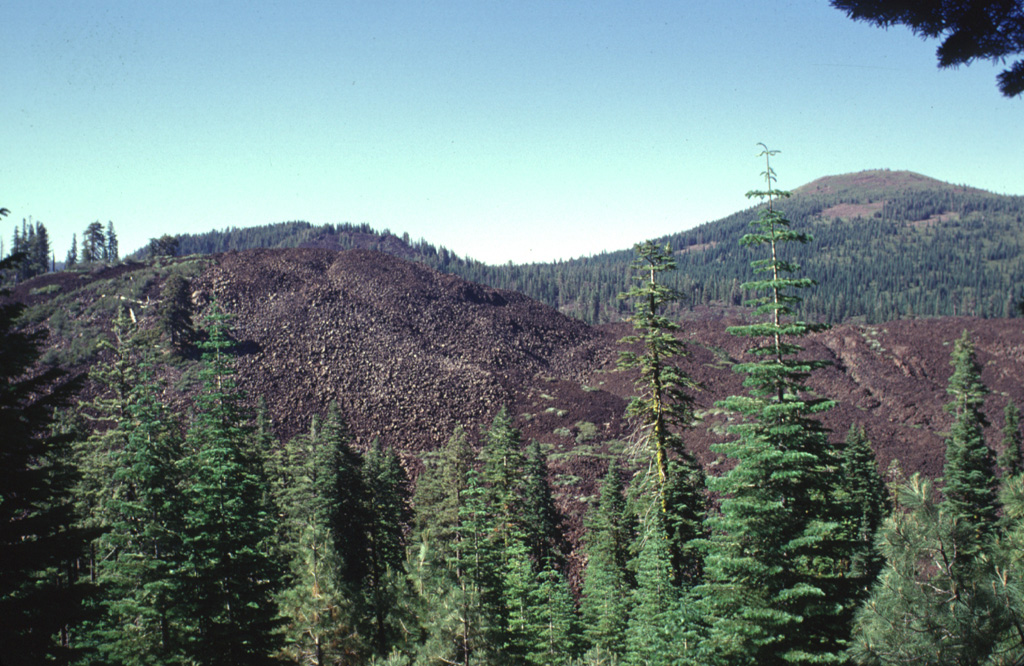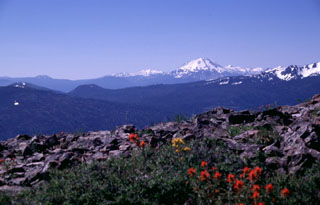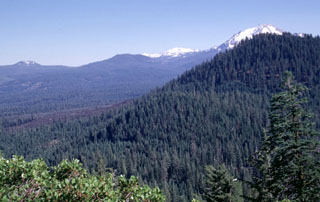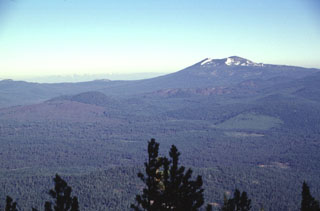

The Global Volcanism Program has no activity reports available for Tumble Buttes.
The Global Volcanism Program has no Weekly Reports available for Tumble Buttes.
The Global Volcanism Program has no Bulletin Reports available for Tumble Buttes.
|
|
||||||||||||||||||||||||||
The Global Volcanism Program is not aware of any Holocene eruptions from Tumble Buttes. If this volcano has had large eruptions (VEI >= 4) prior to 12,000 years ago, information might be found on the Tumble Buttes page in the LaMEVE (Large Magnitude Explosive Volcanic Eruptions) database, a part of the Volcano Global Risk Identification and Analysis Project (VOGRIPA).
This compilation of synonyms and subsidiary features may not be comprehensive. Features are organized into four major categories: Cones, Craters, Domes, and Thermal Features. Synonyms of features appear indented below the primary name. In some cases additional feature type, elevation, or location details are provided.
Cones |
||||
| Feature Name | Feature Type | Elevation | Latitude | Longitude |
| Bear Wallow Butte | Pyroclastic cone | 1948 m | 40° 38' 0.00" N | 121° 38' 0.00" W |
| Eiler Butte | Pyroclastic cone | 2058 m | 40° 43' 0.00" N | 121° 40' 0.00" W |
| Hall Butte | Pyroclastic cone | 2191 m | 40° 42' 0.00" N | 121° 39' 0.00" W |
 Devils Garden, part of which forms the jumbled blocky lava flows in the foreground, is part of the N-S-trending Tumble Buttes, a young volcanic field located north of Lassen Peak. The Tumble Buttes field contains some of the youngest volcanic features in this little known area partially within the Thousand Lakes Wilderness Area west of the Hat Creek Valley. The andesitic lava cone at the upper right is Logan Mountain, of Pleistocene age.
Devils Garden, part of which forms the jumbled blocky lava flows in the foreground, is part of the N-S-trending Tumble Buttes, a young volcanic field located north of Lassen Peak. The Tumble Buttes field contains some of the youngest volcanic features in this little known area partially within the Thousand Lakes Wilderness Area west of the Hat Creek Valley. The andesitic lava cone at the upper right is Logan Mountain, of Pleistocene age. Eiler Butte, the small flat-topped cinder cone at left-center just below the low point on the horizon, is the northermost of a chain of cinder cones forming the Tumble Buttes volcanic field. Eiler Butte, located within the Thousand Lake Wilderness Area, is seen here from Burney Mountain, with snow-capped Lassen Peak in the background to the south. The Tumble Buttes are a N-S-trending chain of cinder cones and lava flows that form some of the youngest volcanic features north of Mount Lassen.
Eiler Butte, the small flat-topped cinder cone at left-center just below the low point on the horizon, is the northermost of a chain of cinder cones forming the Tumble Buttes volcanic field. Eiler Butte, located within the Thousand Lake Wilderness Area, is seen here from Burney Mountain, with snow-capped Lassen Peak in the background to the south. The Tumble Buttes are a N-S-trending chain of cinder cones and lava flows that form some of the youngest volcanic features north of Mount Lassen. Bear Wallow Butte, the forested peak at the right, was the source of the youthful-looking unvegetated lava flows seen at the left-center. Bear Wallow Butte lies at the southern end of a N-S-trending chain of vents known as Tumble Buttes. Snow-capped Lassen Peak is visible to the south just beyond the summit of Bear Wallow Butte.
Bear Wallow Butte, the forested peak at the right, was the source of the youthful-looking unvegetated lava flows seen at the left-center. Bear Wallow Butte lies at the southern end of a N-S-trending chain of vents known as Tumble Buttes. Snow-capped Lassen Peak is visible to the south just beyond the summit of Bear Wallow Butte. A N-S-trending chain of vents extending across the center of the photo forms Tumble Buttes, a young volcanic field north of Lassen Volcanic National Park. A large area of unvegetated lava flows at the left margin originated from Bear Wallow Butte at the southern end of the chain. Other young unvegetated flows form the Devils Rock Garden at right-center, below Crater Mountain, the prominent snow-dappled peak on the horizon. This view looks to the NW across the Hat Creek valley from West Prospect Mountain.
A N-S-trending chain of vents extending across the center of the photo forms Tumble Buttes, a young volcanic field north of Lassen Volcanic National Park. A large area of unvegetated lava flows at the left margin originated from Bear Wallow Butte at the southern end of the chain. Other young unvegetated flows form the Devils Rock Garden at right-center, below Crater Mountain, the prominent snow-dappled peak on the horizon. This view looks to the NW across the Hat Creek valley from West Prospect Mountain.There are no samples for Tumble Buttes in the Smithsonian's NMNH Department of Mineral Sciences Rock and Ore collection.
| Copernicus Browser | The Copernicus Browser replaced the Sentinel Hub Playground browser in 2023, to provide access to Earth observation archives from the Copernicus Data Space Ecosystem, the main distribution platform for data from the EU Copernicus missions. |
|
WOVOdat
Single Volcano View Temporal Evolution of Unrest Side by Side Volcanoes |
WOVOdat is a database of volcanic unrest; instrumentally and visually recorded changes in seismicity, ground deformation, gas emission, and other parameters from their normal baselines. It is sponsored by the World Organization of Volcano Observatories (WOVO) and presently hosted at the Earth Observatory of Singapore.
GVMID Data on Volcano Monitoring Infrastructure The Global Volcano Monitoring Infrastructure Database GVMID, is aimed at documenting and improving capabilities of volcano monitoring from the ground and space. GVMID should provide a snapshot and baseline view of the techniques and instrumentation that are in place at various volcanoes, which can be use by volcano observatories as reference to setup new monitoring system or improving networks at a specific volcano. These data will allow identification of what monitoring gaps exist, which can be then targeted by remote sensing infrastructure and future instrument deployments. |
| IRIS seismic stations/networks | Incorporated Research Institutions for Seismology (IRIS) Data Services map showing the location of seismic stations from all available networks (permanent or temporary) within a radius of 0.18° (about 20 km at mid-latitudes) from the given location of Tumble Buttes. Users can customize a variety of filters and options in the left panel. Note that if there are no stations are known the map will default to show the entire world with a "No data matched request" error notice. |
| UNAVCO GPS/GNSS stations | Geodetic Data Services map from UNAVCO showing the location of GPS/GNSS stations from all available networks (permanent or temporary) within a radius of 20 km from the given location of Tumble Buttes. Users can customize the data search based on station or network names, location, and time window. Requires Adobe Flash Player. |
| Large Eruptions of Tumble Buttes | Information about large Quaternary eruptions (VEI >= 4) is cataloged in the Large Magnitude Explosive Volcanic Eruptions (LaMEVE) database of the Volcano Global Risk Identification and Analysis Project (VOGRIPA). |
| EarthChem | EarthChem develops and maintains databases, software, and services that support the preservation, discovery, access and analysis of geochemical data, and facilitate their integration with the broad array of other available earth science parameters. EarthChem is operated by a joint team of disciplinary scientists, data scientists, data managers and information technology developers who are part of the NSF-funded data facility Integrated Earth Data Applications (IEDA). IEDA is a collaborative effort of EarthChem and the Marine Geoscience Data System (MGDS). |